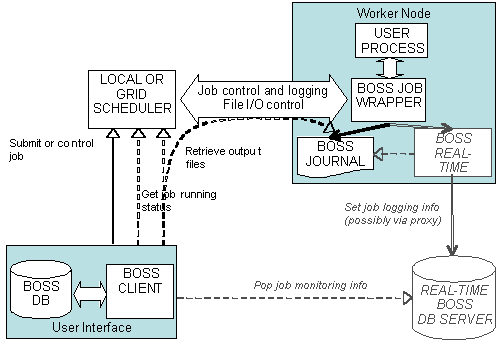BOSS V4
Introduction
For more information, see the CMS computing TDR from which the following paragraph has been adapted.
The CMS workflow management tools rely on a job bookkeeping and monitoring service. This service provides the basic infrastructure for tracking the overall status of individual jobs as well as real-time monitoring (when possible) of the progress and resource utilisation of the jobs. CMS expects to use a VO-specific job bookkeeping and monitoring system (BOSS), that knows about the CMS job structures and configurations and is tailored for these needs. The bookkeeping aspects of BOSS provide the means to log and track all user jobs, to keep control about what is happening and about what happened to ensure provenance and reproducibility. It logs all information, either related to running conditions or specific to the tasks they performed, in a database accessible from the UI from which the job submission takes place. The logging will include information which is relevant regarding the job configuration, interaction with WMS, history of execution etc. It thus contains much more information than what is needed to eventually populate a local or global DBS for future data discovery. A suitable tool will be provided to extract and summarise all logging information. The system is capable of referencing the grid logging and bookkeeping system so that the user will be able to access the grid system transparently. Information such as the running status of the job and eventually its exit code must be available through this channel.
Object Based System for Batch Job Submission and Monitoring (BOSS)

The figure above shows how BOSS fits into the overall workflow of a Physicist (using the UI) submitting her/his job to the GRID.

This figure shows the data flow between BOSS and a Worker Node on the Grid.
Useful Links
CHEP 2006 link to paper on BOSSHow to get and run the current version of BOSS